
|
|
Font Size:
|
||||
|
|
|
|
||||
STATISTICAL BRIEF #433:
Attitudes toward Health Insurance and Their Persistence over Time, Adults, 2001–2011
Highlights
- In 2011, 12.1 percent of adults agreed with the statement "I'm healthy enough that I really don't need health insurance," in contrast to only 9.0 percent of adults in the prior decade (2001). In addition, 24.3 percent of adults agreed with the statement "Health insurance is not worth the money it costs" in 2011 relative to 21.8 percent of adults in 2001.
- An examination of the persistence in attitudes over a two-year interval also revealed substantial shifts in preferences within individuals over time. For years 2010 and 2011, 12.6 percent of the same individuals indicated "health insurance is not worth the money it costs" in both years, in contrast to 9.8 percent for the 2001–2002 period. In addition, 5.2 percent of the same individuals indicated "I'm healthy enough that I really don't need health insurance" in 2010 and 2011 in contrast to 3.2 percent for 2001–2002.
- In both 2001 and 2011, uninsured adults ages 18–64 were substantially more likely to indicate they were healthy and did not need health insurance, relative to their insured counterparts. They were also more likely to indicate that health insurance was not worth its cost, relative to those with coverage.
Introduction
Health insurance helps individuals receive timely access to medical care and protects them against the risk of expensive and unanticipated medical events. In addition to the socioeconomic profiles that distinguish individuals with coverage from those who are uninsured, attitudes regarding the need for and value of health insurance coverage may also affect coverage decisions. Given the potential for individuals’ health insurance preferences to influence health behaviors, it is important to measure the population’s attitudes toward health insurance coverage and to examine the persistence of these attitudes over time.The Household Component of the Medical Expenditure Panel Survey (MEPS-HC) contains a series of self-administered questions that discern individual attitudes regarding the need for health insurance coverage and its cost. Adults age 18 and over are asked whether they strongly agree, agree, are uncertain, disagree, or strongly disagree with each of the following statements: “I’m healthy enough that I really don’t need health insurance” and “Health insurance is not worth the money it costs.”
This Statistical Brief provides a summary of the attitudes adults have regarding the need for health insurance coverage and its cost comparing time periods 2001–2002, 2006, and 2010–2011, based on data from the MEPS-HC. A description of the variation in agreement levels with these attitudes for adults further distinguished by demographic and socioeconomic characteristics is also provided. In addition, the persistence in these attitudes toward health insurance coverage is examined. For this report, strongly agreed and agreed responses were combined into an “agreed” category while strongly disagreed and disagreed responses were combined into a “disagreed” category. All differences between estimates discussed in the text are statistically significant at the 0.05 level unless otherwise noted.
Findings
In 2011, 12.1 percent of adults age 18 and over (27.5 million people, estimate not shown), who were members of the U.S. civilian noninstitutionalized population, agreed with the statement “I’m healthy enough that I really don’t need health insurance,” while 80.6 percent disagreed, and 7.3 percent expressed uncertainty (figure 1, 11.0 percent agreed in 2006). When restricted to the adult population under age 65, 13.4 percent agreed with the statement (figure 1a). Alternatively, only 9.0 percent of adults age 18 and over expressed agreement with the statement in 2001 (9.8 percent for adults under age 65).An examination of the persistence in attitudes over a two-year period also revealed a substantial shift in preferences within individuals over time (figures 3 and 4). This assessment of the persistence in attitudes over time was restricted to adults who were in the U.S. civilian noninstitutionalized population for both years. With respect to the statement “I'm healthy enough that I really don't need health insurance,” 5.2 percent of individuals agreed with the statement in both 2010 and 2011. In addition, 68.2 percent disagreed in both years. The remainder was characterized by a change in attitude over time or uncertainty in response. Alternatively, over the period 2001–2002, only 3.2 percent of adults agreed with the statement in both years and larger percent (72.1) disagreed in both years. With respect to the statement “Health insurance is not worth the money it costs,” 12.6 percent of individuals agreed with the statement in 2010 and 2011, while 45.0 percent disagreed in both years (figure 4). The remaining individuals were characterized by a change in attitude over time or uncertainty in response. In contrast, only 9.8 percent of adults agreed with the statement in both years for the period 2001–2002 (figure 3).
In both 2001 and 2011, adults below the age of 45 were more likely than older individuals to indicate that they are healthy and do not need health insurance, and non-elderly adults were more likely to feel that health insurance was not worth the cost (figures 5 and 5a). In comparisons by race/ethnicity for 2011, Hispanics were more likely than white non-Hispanics and black non-Hispanics to indicate they were healthy and not in need of coverage (16.5 percent versus 10.9 percent and 10.9 percent, respectively; figure 5a) and that insurance was not worth the cost (27.0 percent versus 23.9 and 22.0 percent, respectively; figure 6a). In 2011, adult males were more likely than females to indicate that they were healthy and did not need health insurance (15.3 percent versus 9.1 percent, figure 5a) and to feel that health insurance was not worth the cost (27.2 percent versus 21.7 percent, figure 6a).
In 2011, adults with fewer than 12 years of education were more likely than individuals with 12 or more years of education to indicate they were healthy and not in need of coverage (14.1 percent versus 11.4 and 11.8 percent, respectively; figure 5a). In addition, adults who were classified as high income in the prior year, were less likely than their counterparts with lower incomes to indicate they were healthy and not in need of coverage (figure 5a) and to feel that health insurance was not worth the cost (figure 6a). Furthermore, adults between the ages of 18 and 64 who were uninsured for all of 2011 were nearly twice as likely as their privately insured counterparts and about two-and-one-half times as likely as those with public coverage to agree with the statement “I'm healthy enough that I really don't need health insurance” (21.5 percent versus 12.1 percent and 8.4 percent for the privately and publicly insured, respectively; figure 5a). These uninsured adults were also more likely to agree with the statement “Health insurance is not worth the money it costs” (36.7 percent, figure 6a), relative to those with private or public coverage (24.8 percent and 20.0 percent, respectively). While individuals in 2001 were generally less inclined to indicate that they were healthy and not in need of health insurance and to indicate that health insurance was not worth the cost, similar differentials in their preferences by socio-demographic classifications were also observed relative to 2011.
Data Source
The estimates shown in this Statistical Brief are drawn from analyses conducted by the MEPS staff from the following public use files: 2001 Full Year Population Characteristics, HC-060; 2002 Full Year Population Characteristics, HC-070; 2006 Full Year Population Characteristics, HC-105; 2010 Full Year Population Characteristics, HC-138; and the 2011 Full Year Population Characteristics, HC-147. The level of item nonresponse associated with the attitude questions from the SAQ (self-administered questionnaire) instruments was approximately 2 percent.Definitions
Longitudinal classifications of attitudinal responsesIndividuals with responses of agree or strongly agree to the attitudinal items in both years were classified as “agree both years.” Individuals with responses of disagree or strongly disagree to the attitudinal items in both years were classified as “disagree both years.” Individuals with responses of disagree, strongly disagree, or uncertain in 2010 and with responses of agree or strongly agree to the attitudinal items in 2011 were classified as “shift to agree” Individuals with responses of agree, strongly agree, or uncertain in 2010 and with responses of disagree or strongly disagree to the attitudinal items in 2011 were classified as “shift to disagree.” All other responses were classified as “other uncertain.” The longitudinal analyses were conditioned on responses to the SAQ in 2010 and 2011 for the same individuals with MEPS Panel 15 longitudinal weights. The same approach held for the analyses of data for 2001 and 2002 using MEPS Panel 6 longitudinal weights. Over 88 percent of these longitudinal respondents in MEPS also responded to the SAQ in both years.
Uninsured
Individuals classified as uninsured throughout the year did not have public or private health insurance coverage during that time interval. Individuals covered only by noncomprehensive State-specific programs (e.g., Maryland Kidney Disease Program) or private single-service plans (e.g., coverage for dental or vision care only, coverage for accidents or specific diseases) were considered to be uninsured.
Public only coverage
Individuals were considered to have public only health insurance coverage if they were not covered by private insurance and they were covered by Medicare, Medicaid, TRICARE, or other public only hospital and physician coverage.
Private coverage
Private health insurance coverage was defined as nonpublic insurance that provided coverage for hospital and physician care (including Medigap coverage).
Race/ethnicity
Classification by race/ethnicity was based on information reported for each family member. Respondents were asked if each family member's race was best described as American Indian, Alaska Native, Asian or Pacific Islander, black, white, or other. They also were asked if each family member's main national origin or ancestry was Puerto Rican; Cuban; Mexican, Mexicano, Mexican American, or Chicano; other Latin American; or other Spanish. All persons whose main national origin or ancestry was reported in one of these Hispanic groups, regardless of racial background, were classified as Hispanic. Since the Hispanic grouping can include black Hispanic, white Hispanic, Asian and Pacific Islanders Hispanic, and other Hispanic, the race categories of black, white, Asian and Pacific Islanders, and other do not include Hispanics. MEPS respondents who reported other single or multiple races and were non-Hispanic were included in the other category. For this analysis, the following classification by race and ethnicity was used: Hispanic (of any race), non-Hispanic blacks single race, non-Hispanic whites single race, and non-Hispanic others.
Poverty status
Sample persons were classified according to the total yearly income of their family. Within a household, all people related by blood, marriage, or adoption were considered to be a family. Poverty status categories are defined by the ratio of family income to the Federal income thresholds, which control for family size and age of the head of family. Poverty status was based on annual income in 2001 and 2010, respectively.
Poverty status categories are defined as follows:
- Poor: Persons in families with income less than or equal to the poverty line, including those who had negative income.
- Near poor: Persons in families with income over the poverty line through 125 percent of the poverty line.
- Low income: Persons in families with income over 125 percent through 200 percent of the poverty line.
- Middle income: Persons in families with income over 200 percent through 400 percent of the poverty line.
- High income: Persons in families with income over 400 percent of the poverty line.
In every round, the respondent is asked to rate the health of every member of the family. The exact wording of the question is: “In general, compared to other people of (PERSON)’s age, would you say that (PERSON)’s health is excellent, very good, good, fair, or poor?” The health status classification in Rounds 2 and 4 was used for this report.
About MEPS-HC
MEPS-HC is a nationally representative longitudinal survey that collects detailed information on health care utilization and expenditures, health insurance, and health status, as well as a wide variety of social, demographic, and economic characteristics for the U.S. civilian noninstitutionalized population. It is cosponsored by the Agency for Healthcare Research and Quality and the National Center for Health Statistics. For more information about MEPS, call the MEPS information coordinator at AHRQ (301-427-1656) or visit the MEPS Web site at http://www.meps.ahrq.gov/.References
For a detailed description of the MEPS survey design, sample design, and methods used to minimize sources of nonsampling error, see the following publications:Cohen, J., Cohen S., and Banthin, J. “The Medical Expenditure Panel Survey: A National Information Resource to Support Healthcare Cost Research and Inform Policy and Practice.” Medical Care 2009, 47(7), Supplement, pp S44–S50.
Cohen, J. Design and Methods of the Medical Expenditure Panel Survey Household Component. MEPS Methodology Report No. 1. AHCPR Pub. No. 97-0026. Rockville, MD: Agency for Health Care Policy and Research, 1997. http://www.meps.ahrq.gov/mepsweb/data_files/publications/mr1/mr1.shtml
Cohen, S.B. Attitudes toward Health Insurance and Their Persistence over Time, Adults, 2010–2011. Statistical Brief #426. December 2013. Agency for Healthcare Research and Quality, Rockville, MD. http://www.meps.ahrq.gov/mepsweb/data_files/publications/st426/stat426.shtml
Cohen, S.B. Attitudes toward Health Insurance and Their Persistence over Time, Adults 2009–2010. Statistical Brief #395. December 2012. Agency for Healthcare Research and Quality, Rockville, MD. http://www.meps.ahrq.gov/mepsweb/data_files/publications/st395/stat395.shtml
Cohen, S.B. Attitudes toward Health Insurance and Their Persistence over Time, Adults 2006–2007. Statistical Brief #260. September 2009. Agency for Healthcare Research and Quality, Rockville, MD. http://www.meps.ahrq.gov/mepsweb/data_files/publications/st260/stat260.shtml
Cohen, S. Design Strategies and Innovations in the Medical Expenditure Panel Survey. Medical Care, July 2003: 41(7) Supplement: III-5–III-12.
Ezzati-Rice, T.M., Rohde, F., Greenblatt, J. Sample Design of the Medical Expenditure Panel Survey Household Component, 1998–2007. Methodology Report No. 22. March 2008. Agency for Healthcare Research and Quality, Rockville, MD. http://www.meps.ahrq.gov/mepsweb/data_files/publications/mr22/mr22.shtml
Machlin, S. and Carper, K. Attitudes toward Health Insurance among Adults Age 18 and Over. Statistical Brief #87. July 2005. Agency for Healthcare Research and Quality, Rockville, MD. http://www.meps.ahrq.gov/mepsweb/data_files/publications/st87/stat87.shtml
Suggested Citation
Cohen, S.B. Attitudes toward Health Insurance and Their Persistence over Time, Adults, 2001–2011. Statistical Brief #433. April 2014. Agency for Healthcare Research and Quality, Rockville, MD. http://www.meps.ahrq.gov/mepsweb/data_files/publications/st433/stat433.shtmlAHRQ welcomes questions and comments from readers of this publication who are interested in obtaining more information about access, cost, use, financing, and quality of health care in the United States. We also invite you to tell us how you are using this Statistical Brief and other MEPS data and tools and to share suggestions on how MEPS products might be enhanced to further meet your needs. Please email us at MEPSProjectDirector@ahrq.hhs.gov or send a letter to the address below:
Steven B. Cohen, PhD, Director
Center for Financing, Access, and Cost Trends
Agency for Healthcare Research and Quality
540 Gaither Road
Rockville, MD 20850
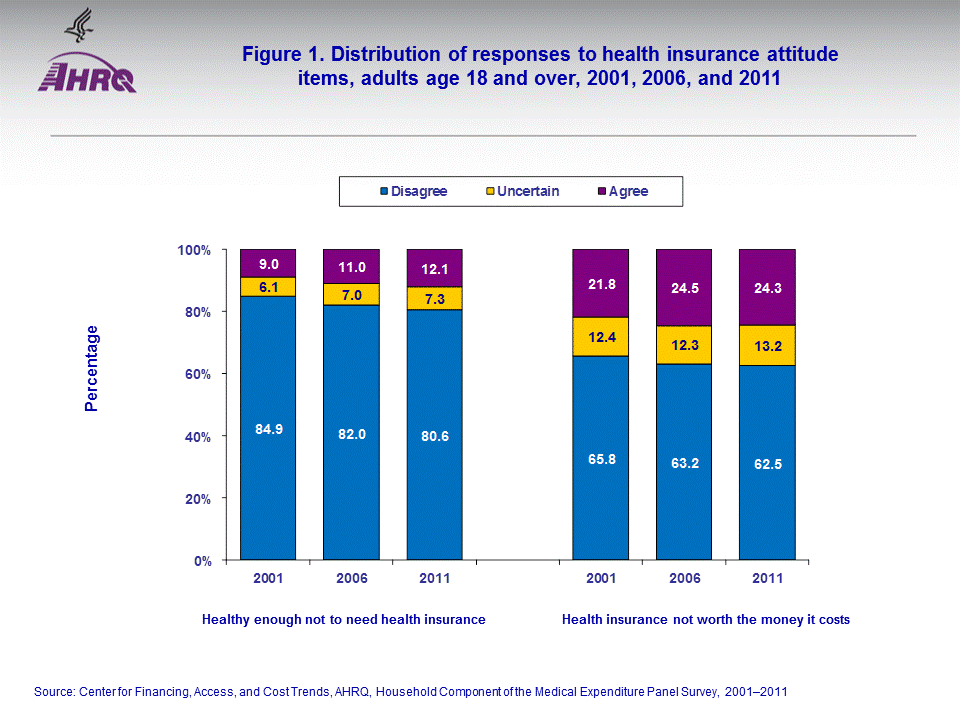 |
||||||||||||||||||||||||||||||||||||||||||||||||||||||||||||||
|
||||||||||||||||||||||||||||||||||||||||||||||||||||||||||||||
|
|
||||||||||||||||||||||||||||||||||||||||||||||||||||||||||||||
 |
||||||||||||||||||||||||||||||||||||||||||||||||||||||||||||||
|
||||||||||||||||||||||||||||||||||||||||||||||||||||||||||||||
|
|
||||||||||||||||||||||||||||||||||||||||||||||||||||||||||||||
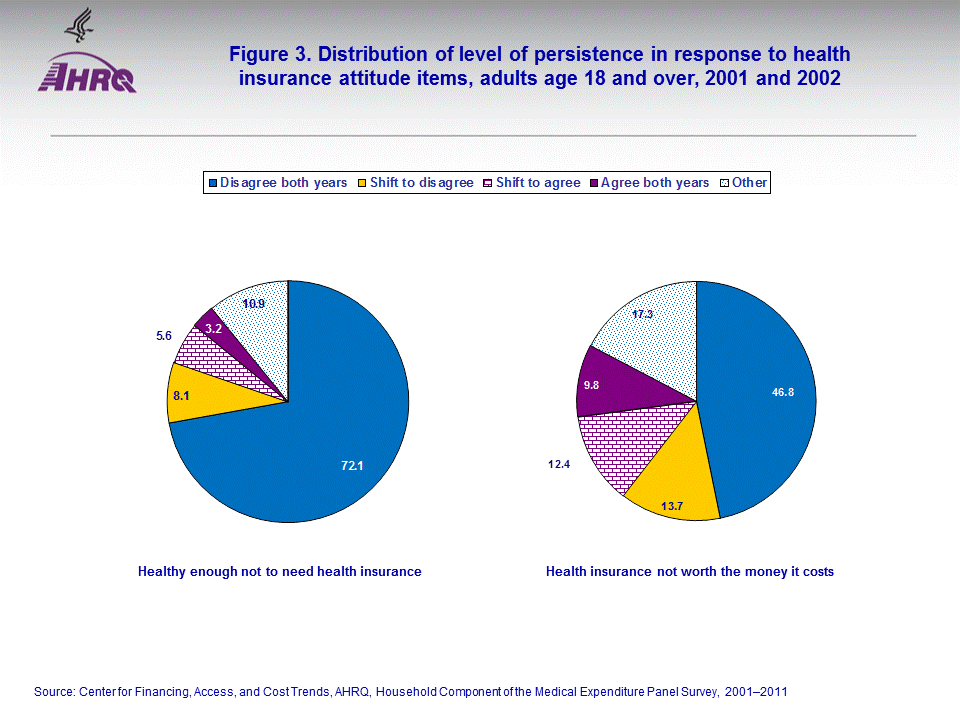 |
||||||||||||||||||||||||||||||||||||||||||||||||||||||||||||||
|
||||||||||||||||||||||||||||||||||||||||||||||||||||||||||||||
|
|
||||||||||||||||||||||||||||||||||||||||||||||||||||||||||||||
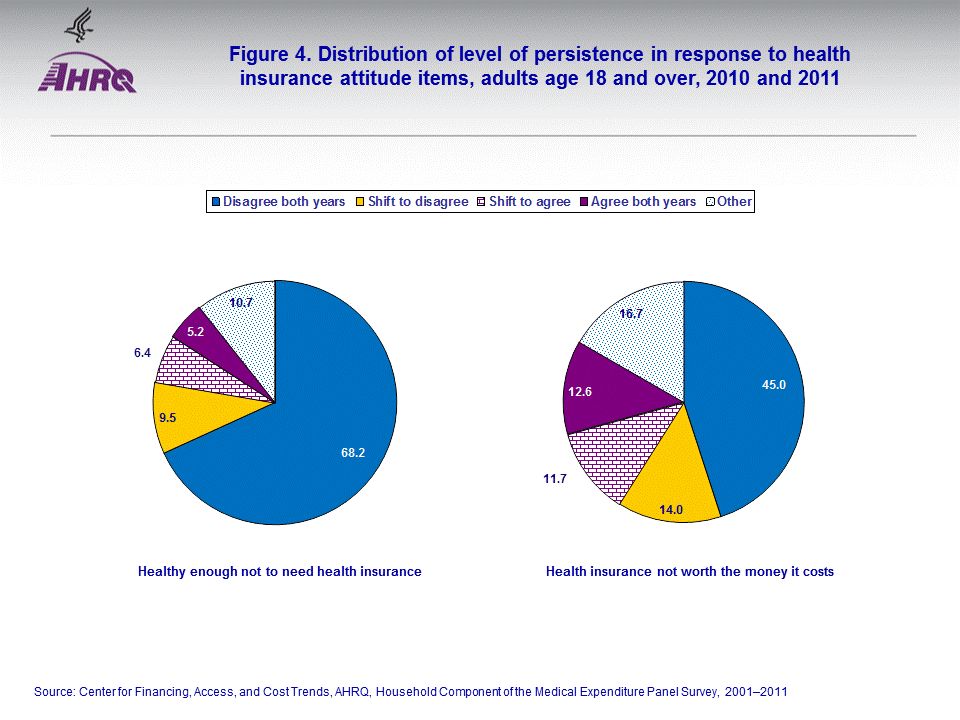 |
||||||||||||||||||||||||||||||||||||||||||||||||||||||||||||||
|
||||||||||||||||||||||||||||||||||||||||||||||||||||||||||||||
|
|
||||||||||||||||||||||||||||||||||||||||||||||||||||||||||||||
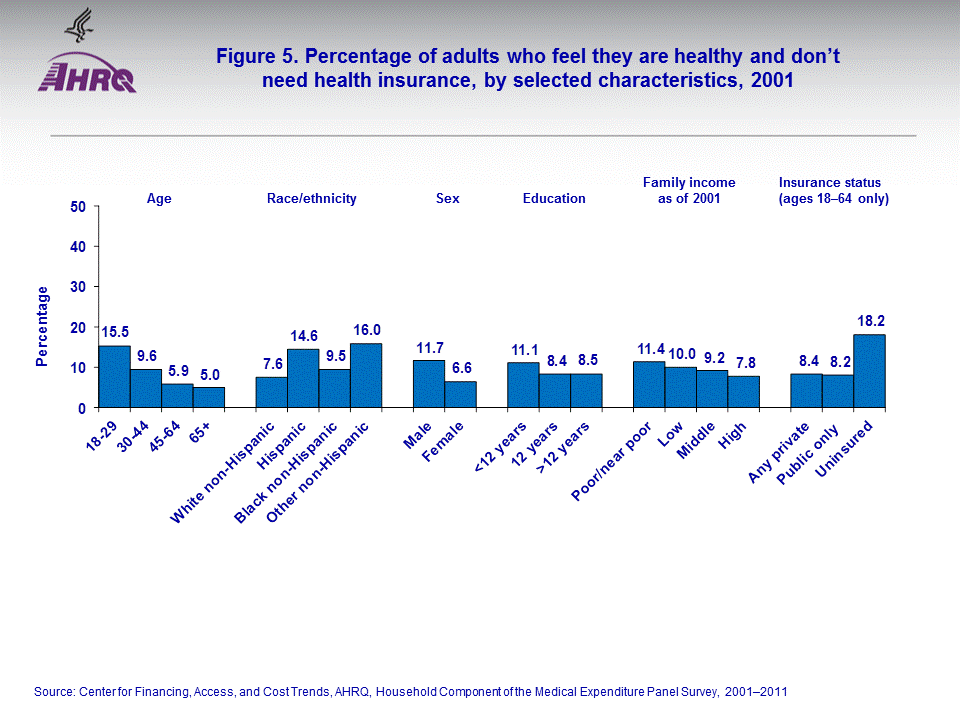 |
||||||||||||||||||||||||||||||||||||||||||||||||||||||||||||||
|
||||||||||||||||||||||||||||||||||||||||||||||||||||||||||||||
|
|
||||||||||||||||||||||||||||||||||||||||||||||||||||||||||||||
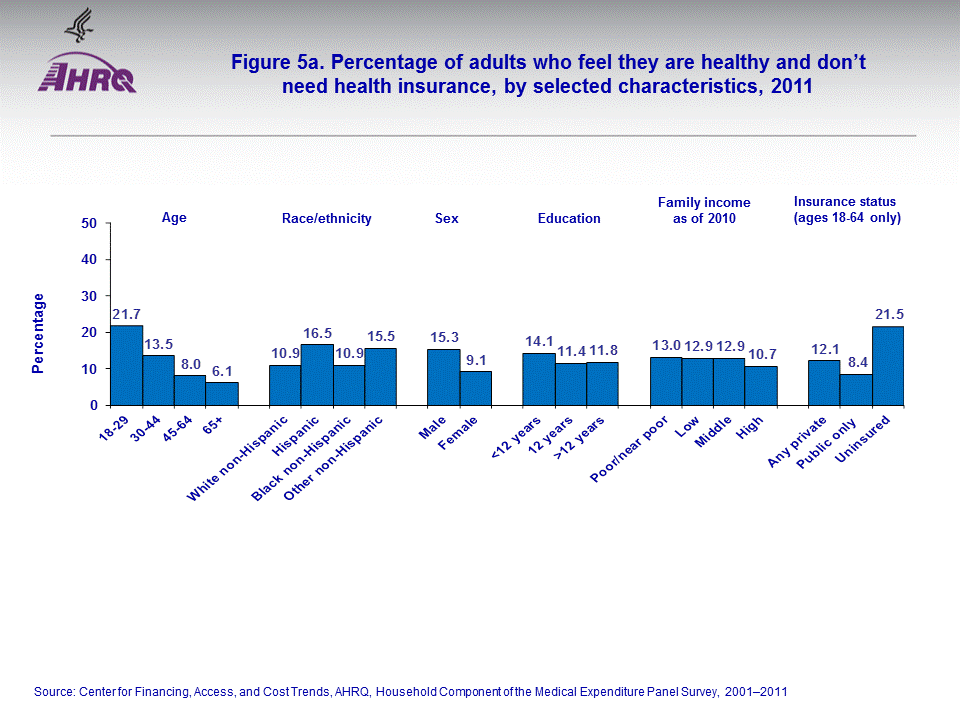 |
||||||||||||||||||||||||||||||||||||||||||||||||||||||||||||||
|
||||||||||||||||||||||||||||||||||||||||||||||||||||||||||||||
|
|
||||||||||||||||||||||||||||||||||||||||||||||||||||||||||||||
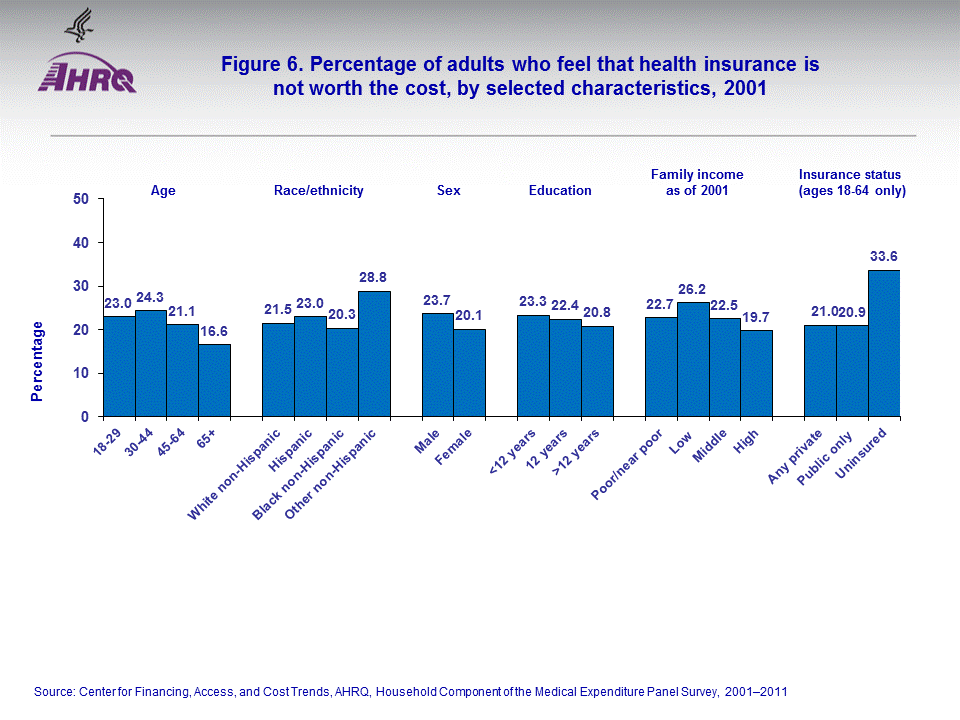 |
||||||||||||||||||||||||||||||||||||||||||||||||||||||||||||||
|
||||||||||||||||||||||||||||||||||||||||||||||||||||||||||||||
|
|
||||||||||||||||||||||||||||||||||||||||||||||||||||||||||||||
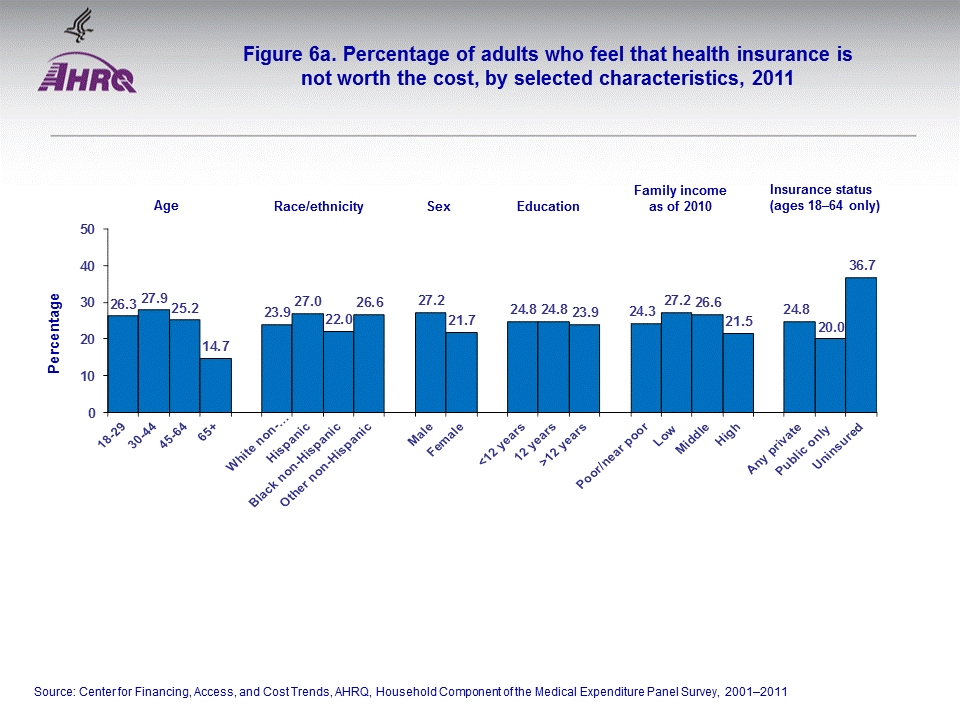 |
||||||||||||||||||||||||||||||||||||||||||||||||||||||||||||||
|
||||||||||||||||||||||||||||||||||||||||||||||||||||||||||||||
|
|
||||||||||||||||||||||||||||||||||||||||||||||||||||||||||||||


